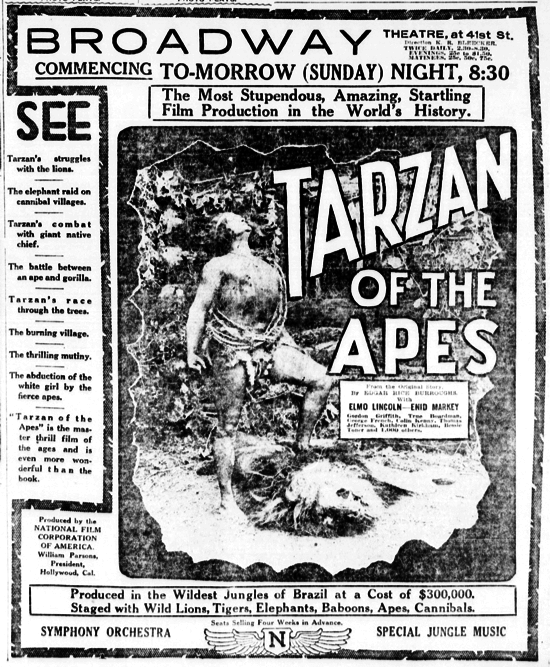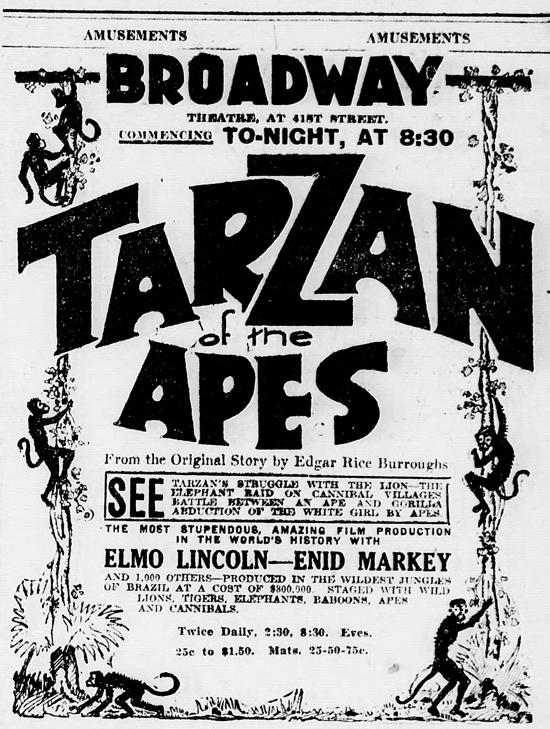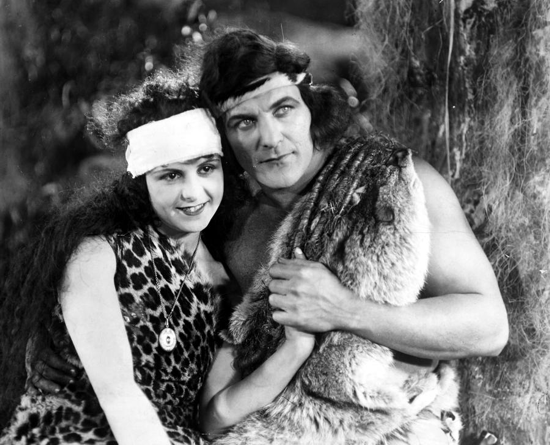 |
| Tarzan of the Apes (1918) film title frame |
Title: "Tarzan of the Apes"
Category: Movies
Subcategory: Action/Adventure
Director: Scott Sidney
Writers:
--- Edgar Rice Burroughs (novel)
--- Fred Miller
--- Lois Weber
--- Edgar Rice Burroughs (novel)
--- Fred Miller
--- Lois Weber
Based on: "Tarzan of the Apes"
by Edgar Rice Burroughs (1912)
by Edgar Rice Burroughs (1912)
 |
| Scott Sidney Warren C., Apr. 27, 1874 - London, July 20, 1928, director of the 1918 film Tarzan of the Apes |
Starring:
--- Elmo Lincoln (Tarzan)
--- Enid Markey (Jane Porter)
--- True Boardman (John Clayton)
--- Kathleen Kirkham (Alice Clayton)
--- George B. French (Binns, a sailor)
--- Gordon Griffith (Tarzan, younger)
--- Colin Kenny (William Cecil Clayton)
--- Thomas Jefferson (Professor Porter)
--- Bessie Toner (Bar Maid)
--- Jack Wilson (Captain of the Fuwalda)
--- Louis Morrison (Innkeeper)
--- Eugene Pallette
--- Fred L. Wilson
--- Elmo Lincoln (Tarzan)
--- Enid Markey (Jane Porter)
--- True Boardman (John Clayton)
--- Kathleen Kirkham (Alice Clayton)
--- George B. French (Binns, a sailor)
--- Gordon Griffith (Tarzan, younger)
--- Colin Kenny (William Cecil Clayton)
--- Thomas Jefferson (Professor Porter)
--- Bessie Toner (Bar Maid)
--- Jack Wilson (Captain of the Fuwalda)
--- Louis Morrison (Innkeeper)
--- Eugene Pallette
--- Fred L. Wilson
Cinematography: Enrique Juan Vallejo
Producer: William Parsons
Production company: National Film Corporation of America
Distributor: First National Exhibitors' Circuit
Running time: 73 min.
Color: Black and White
Language: Silent
Summary plot: John and Alice Clayton take ship for Africa. Mutineers maroon them. After his parents die the newborn Tarzan is taken by a great Ape, Kala. Later the boy finds his father's knife and uses it to become King of Apes. Binns, the sailor who saved the Claytons and who has been held by Arab slavers for ten years, finds the young Tarzan and then heads for England to notify his kin. A scientist arrives to check out Binns' story. Tarzan, now a man, kills the native who killed Kala; when their chief is killed the black villagers appease Tarzan with gifts and prayers. The scientist's daughter Jane is carried off by a native, rescued by Tarzan, aggressively loved by him, and at last accepts him with open arms.
Interesting facts: Tarzan of the Apes, the first Tarzan movie ever made released in 1918 in the US, is based on Edgar Rice Burroughs' homonymic novel. The movie adapts only the first part of the novel, the remainder becoming the basis for the sequel, The Romance of Tarzan. Tarzan of the Apes was filmed in 1917 in Morgan City, Louisiana, utilizing Louisiana swamps as a stand-in for the African jungle. National Film Corporation hired eight acrobats to play apes for which costumes made from goat skins and elaborate masks were constructed.
Slogan: «The most stupendous, amazing, startling, film production in the world's history»
Property: National Film Corporation of America
 |
| Tarzan of the Apes newspaper advertisement (The evening world, New York, January 26, 1918). «JUNGLE SCENES IN NOVEL FILM FOR BROADWAY - Native and Animals of Brazil in "Tarzan of the Apes". - To what lenght motion picture producers will go to get proper atmospheric detail and local color will be demonstrated at the Broadway Theatre in the new film sensation "Tarzan of the Apes", which begins an indefinite run at that house on Sunday night and is to be shown twice daily thereafter. The National Film Corporation, which made the production, took a company composed of twenty principals, directors, camera men and a crew of stage builders to the Amazon River district of Brazil and thence to the interior of the Brazilian jungles, where two months were spent making the scenes of the story. Six lions, four tigers and a number of panthers, wild boars and elephants were transported to the Brazilian wilds for use in the picture. Four lions were killed before the camera and a number of other wild animals slain. Over 2,000 natives were engaged, asembled at Manaos and transported inland and rehearsed for three weeks before the scenes typifying cannibal action were staged. As the natives spoke nothing but a Portoguese patois, a number of interpreters were kept constantly on the scene and busily engaged conveying the director's wishes. Bushmen were necessary to clear the locations each day of poisonous reptiles and during the ten weeks the company stayed in Brazil over 200 snakes were killed, fifteen serious accidents happened to the players in the company and three fores occured. A cannibal village covering three aeres of ground was built and burned to the ground during the action of the play, and rebuilt from another angle and again burned when Tarzan, at the head of a group of elephants, ranged through the village to avenge the death of his ape mother. Three hundred thatched roof huts were built each time. Fifty-two aerial acrobats were engaged and taken to the jungles and ape suits built to their measure by tailors. Nine cars, six Pullman and three baggage, were required to transport the company from Los Angeles to New Orleans, where a number of scenes were staged. Sixteen sheds, similar to those at our army cantonments, were erected in Brazil for the housing of the members of the company, and a small church was built and services in various religions held on each Sunday. Two hundred thousand feet of film were exposed at a cost of $300,000. The presentation of this picture at the Broadway Theatre will be the first showing anywhere outside of the company's studios». |
 |
| Tarzan of the Apes newspaper advertisement (The evening world, New York, Jan. 26, 1918) |
 |
| Tarzan of the Apes newspaper advertisement (New-York tribune, New York, Jan. 27, 1918) |
 |
| Tarzan of the Apes newspaper advertisement (The New York Times, Jan. 27, 1918) |
 |
Tarzan of the Apes theatrical poster (1918) |
 |
 |
Tarzan of the Apes original posters (1918) |
 |
Tarzan of the Apes advertisement (Moving Picture World, January-March 1918) |
 |
 |
Tarzan of the Apes advertising cards (1918) |
 |
Tarzan of the Apes, Enid Markey as Jane Porter and Elmo Lincoln as Tarzan (1918) |
Tarzan of the Apes, complete film (2004 Platinum Disc version of the 1918 original, 60 min.) |



